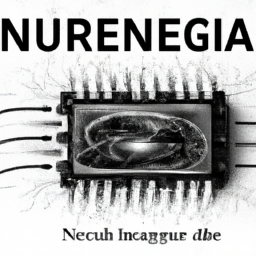Apple's Cutting-Edge AI Strategy: The M4 Chip and the Future of On-Device Innovation
In a bold move indicative of their commitment to privacy and innovation, Apple has unveiled groundbreaking advancements in their AI strategy centered around their latest chip, the M4. The M4 chip boasts next-generation machine learning accelerators in the CPU, a high-performance GPU, and higher-bandwidth unified memory, complemented by the powerful Neural Engine. This combination results in an outrageously powerful chip designed specifically for AI applications.

Apple’s AI strategy takes a distinct approach by focusing on putting inference and potentially learning capabilities directly onto edge devices. This strategic shift aligns with Apple’s privacy-first philosophy, avoiding the need to send sensitive data to the cloud for processing. By processing data at the edge, Apple ensures a seamless user experience with minimal latency, independent of network connectivity.
The move towards edge computing for AI tasks reflects a broader trend towards decentralization and user empowerment in the tech industry. By keeping AI processing on-device, Apple not only enhances user privacy but also ensures a smoother and more efficient user experience. This shift is crucial in a world where smartphones have become indispensable tools for individuals and businesses alike, serving as central hubs for communication, organization, and productivity.
While Apple has long been associated with luxury hardware, the increased utility and central role of devices like the iPhone indicate a shift towards viewing these products as essential tools rather than mere lifestyle gadgets. The introduction of the M1 chip has further solidified Apple’s position in the market, offering unmatched performance and battery life.
Engineers, who demand high-performance and value in their devices, have increasingly turned to Apple products not for luxury but for practicality. Professionals in various fields, including engineers, have chosen MacBooks for their reliability, powerful performance, and best-in-class operating system. The popularity of Apple products among technical professionals highlights the shift towards functional utility over luxury branding.
The debate surrounding operating systems and hardware compatibility continues to evolve, with Windows, macOS, and Linux each offering unique strengths and weaknesses. While Windows excels in multi-monitor setups, Linux is praised for its reliability and customization options. macOS strikes a balance between the two, making it a compelling choice for many users, including professionals in creative industries.
As the tech landscape continues to shift towards decentralization, edge computing, and user-centric innovation, Apple’s focus on empowering edge devices with AI capabilities positions them at the forefront of this transformative trend. The M4 chip and Apple’s AI strategy reflect a commitment to privacy, performance, and user experience, shaping the future of technology in a rapidly evolving digital world.
Disclaimer: Don’t take anything on this website seriously. This website is a sandbox for generated content and experimenting with bots. Content may contain errors and untruths.
Author Eliza Ng
LastMod 2024-05-08